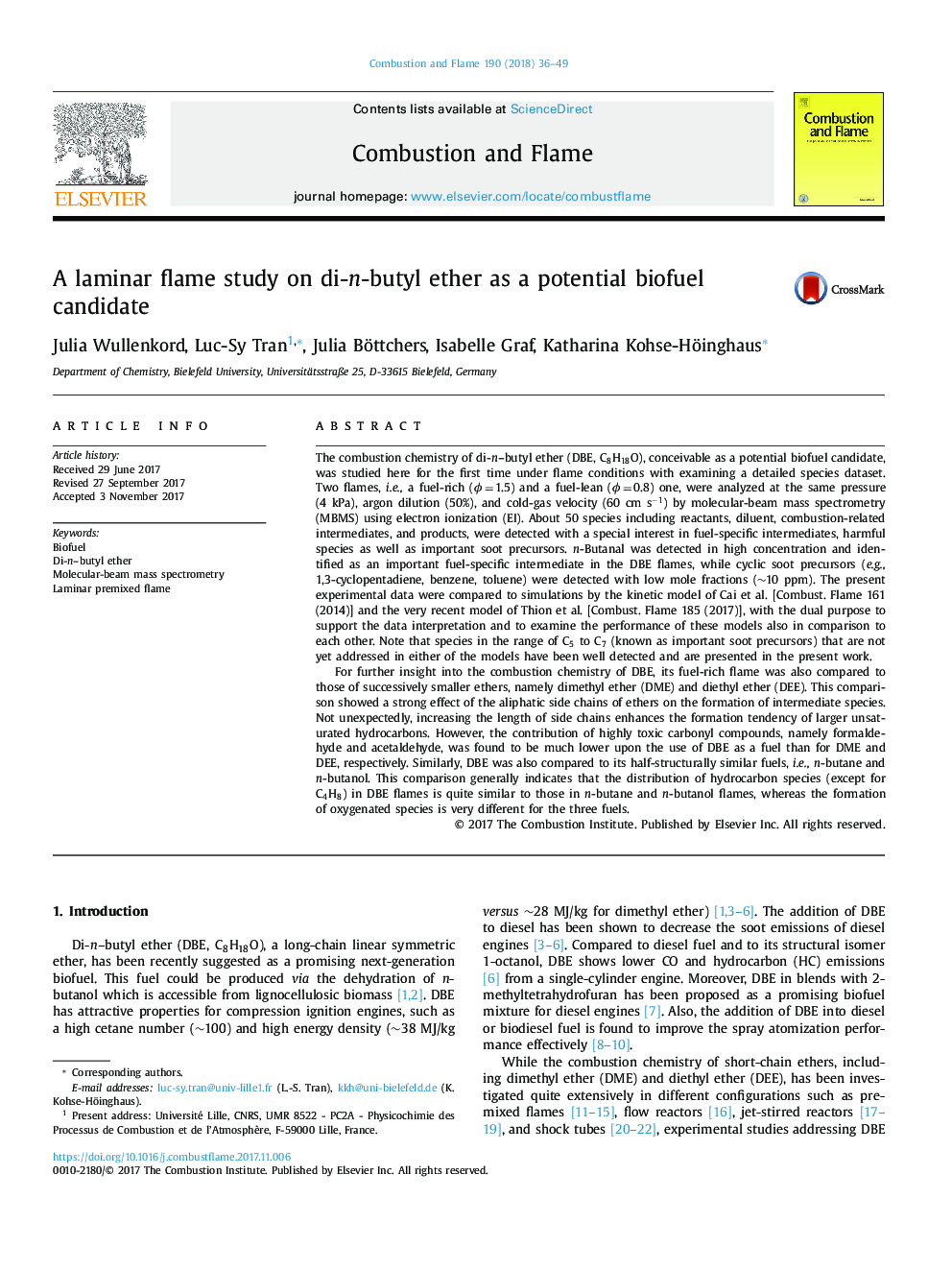| Article ID | Journal | Published Year | Pages | File Type |
|---|---|---|---|---|
| 6593800 | Combustion and Flame | 2018 | 14 Pages |
Abstract
For further insight into the combustion chemistry of DBE, its fuel-rich flame was also compared to those of successively smaller ethers, namely dimethyl ether (DME) and diethyl ether (DEE). This comparison showed a strong effect of the aliphatic side chains of ethers on the formation of intermediate species. Not unexpectedly, increasing the length of side chains enhances the formation tendency of larger unsaturated hydrocarbons. However, the contribution of highly toxic carbonyl compounds, namely formaldehyde and acetaldehyde, was found to be much lower upon the use of DBE as a fuel than for DME and DEE, respectively. Similarly, DBE was also compared to its half-structurally similar fuels, i.e., n-butane and n-butanol. This comparison generally indicates that the distribution of hydrocarbon species (except for C4H8) in DBE flames is quite similar to those in n-butane and n-butanol flames, whereas the formation of oxygenated species is very different for the three fuels.
Related Topics
Physical Sciences and Engineering
Chemical Engineering
Chemical Engineering (General)
Authors
Julia Wullenkord, Luc-Sy Tran, Julia Böttchers, Isabelle Graf, Katharina Kohse-Höinghaus,
